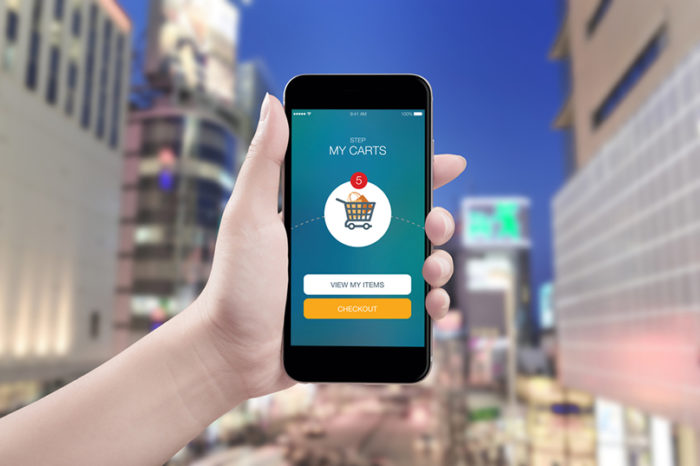Average online basket abandonment is just under 70% (Baynard Institute 2017), resulting in huge amounts of lost revenue. How to tackle this is a real issue. Taking the lead from behavioural science can help businesses understand customers, give them a better experience and, ultimately, help convert sales.
Based on ongoing research into behavioural science’s role in shopping, conducted alongside Durham University, we believe that any online sales issue can be solved by identifying the key sales triggers that influence buying, removing the barriers to purchase. This will then help deliver compelling shopper experiences, at the right time and in the right context to meet consumer needs and a brand’s commercial objectives. We call this Brand Commerce.
Online sales continue to grow and grow. According to Mintel/ONS, they rose 19.2% in 2016 to £50.8bn. There are key reasons why brands and retailers have difficulty tracking behaviour. For example, almost 57% of gift searches start online. However, the subsequent customer journey becomes more convoluted because consumers use a selection of devices to buy online and often switch between them.
Behavioural science reveals shopper habits
Behavioural science has become critical to unlocking the secrets of online shopping habits; identifying and removing barriers to purchase and nudging people to check-out. The purchase process of shopping based on different triggers, from a friend’s recommendation to paying extra for something perceived as better quality, is all down to heuristics – the mental shortcuts we take when making decisions.
These are the foundations of a behavioural science-based approach that informs Brand Commerce marketing activity, by affecting people’s decision-making and triggering them to make a purchase. An ever-decreasing consumer attention span continues to make it hard for brands to reach out and interact with consumers. With 68.8% of online baskets being abandoned, this is no small feat.
We uncovered the key nine sales triggers that help drive both trial and sales:
- Brand Budgeting
- Less Means More
- Instant Gratification
- The Value of Ownership
- Better Than Average
- One Key Thing
- The Obvious Truth
- Choice Reduction
- Social Proof
These triggers act as a framework to interrogate a brand and help to identify the Brand Commerce creative solution to solve a brand’s marketing challenges; from consumers overwhelmed by choice, to tackling and reframing price-driven perceptions. Using a range of technology-driven techniques – such as MRI scans to track emotional response to brand messages and wearable tech that records in-store decision-making – swathes of data can be collected and mined.
E-commerce scenarios and tips on how to overcome barriers by applying the sales trigger data appropriately:
Seeking shopper loyalty
With grocery shopping driven by price and convenience, it’s harder than ever to build loyalty. Graze, the UK and USA-based healthy snacks company, has embraced the ‘Value of Ownership’ trigger through its successful incentivisation trial to build a robust subscription service. The ‘trial’ method allows customers to ‘own’ a piece of the brand without initially paying for it. The data can be used to plan for immediate and tangible future rewards to keep customers engaged and continuing to use the product. Graze has also adopted the ‘social proof’ trigger by building the brand predominantly through word of mouth, both on and offline.
Word of mouth is the primary factor behind 20-50% of all purchasing decisions (McKinsey). As its influence is greatest when consumers are buying a product for the first time or when products are relatively expensive, brands must measure and manage word of mouth to understand exactly what makes it effective. The content of messages must address important product or service features as soon as it’s launched if it is to influence consumer decisions.
Escaping a budget cut
Customer decisions are increasingly price-driven and people will often reduce their budgets permanently in a specific category. To counter this, products must be framed in new ways that justify spend so people are not just shopping on deals. The UK-based drinks brand Innocent adhered to the ‘Brand Budgeting’ by embedding the justification that a smoothie equals ‘two of your five a day’. Coupled with its ethical business practices, people can justify the additional cost over own-label alternatives. By framing the justification for a price premium, brands can ensure that price does not have to be their default promotional activity.
Curtailing customer procrastination
The vast amount of choice online will leave open the possibility for consumers clicking off a brand’s site and onto another. Many retailers have used ‘Choice Reduction’ by introducing shopping lists so shoppers can save products and make sense of the vast selections. Clothing retailer ASOS has introduced some limitations to their lists, namely only allowing products on the list for 60 days before being automatically removed, to limit procrastination. Data that indicates the reasons why people leave their customer journey up to checkout stage will be invaluable here. Offering a clear reason to purchase by a certain date will encourage urgency.
As consumers’ attention continues to flit from one channel to the next, shopping baskets are being abandoned. The powerful insight of behavioural science driving consumers’ decisions in an e-commerce environment helps to remove barriers to purchase. They inform Brand Commerce campaigns to help companies harness technology so shoppers are given a great experience online that won’t result in empty shopping baskets.
Read also:
Are 7 interactions optimal for driving maximum basket revenue for retailers?
What retail start-ups can teach classic direct sellers about social shopping and over-55s
